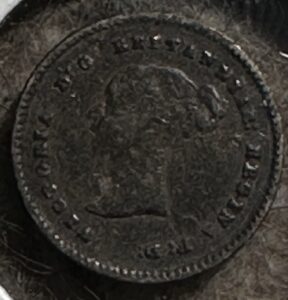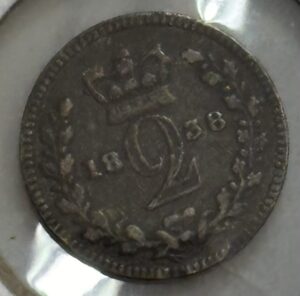Per the Catholic Church, and other denominations that notionally agree with their calendar, it’s Holy Week. Pretty much every day in from Palm Sunday to Easter Sunday has a special name. For example, as I write this, today is Fig Tuesday because important fig related things happened today in the life of Jesus. Tomorrow is Spy Wednesday where we remember the sneeki breeki of Judas. But then you get to Thursday and it’s called Maundy Thursday. You then have to deal with the classic question from a five year old “What’s a Maundy?” and you are instantly paralyzed with fear that Maundy is a racial slur. GOOD NEWS! Maundy is not a slur unless someone has been innovating in the field and I haven’t heard about it.
But I’m not here to talk about the Easter story, except in so much as it touches on something near and dear to my heart: Coins
In the calendar, Maundy Thursday is the commemoration of The Last Supper and Jesus’ instructions to his disciples to “do this in memory of me”. It is a commandment, which may give us the etymological root of the word Maundy. If you’re the kind of person who is inclined to believe that there is hidden messaging and symbolism in the bible, well, it ain’t exactly hidden in the story of The Last Supper. This is also the point where time keeps on passing and the cultural conversation back and forth with local cultures starts creating new holiday customs. Traditionally, Maundy Thursday is when alms are given to the poor by royalty, in the form of coins or clothing, as they make their way to church and the mighty wash the feet of beggars to demonstrate humility. Nice, right? Well, you can count on the English to make things difficult and also decide to embrace symbology to get out of actually doing the whole humility thing.
If one were to take a very cynical view of the practices by royalty, you might interpret the giving of alms very publicly before entering church as signaling of both their wealth and control. It is hard to interpret the footwashing, the pedilavium, as anything but the high stooping to serve the low, if of course those feet hadn’t already hadn’t been pre-washed for the royal and sachets of pleasant flowers & herbs (AKA nosegays) provided so you didn’t have to smell the poor. The only thing left of the footwashing these days is the wearing of nosegays. The gifts of alms got complicated too. If nice clothing was given to the poor by the royal, footmen were there to promptly take that away the moment the royal looked away because, MY GOD, you can’t have the poor wearing nice things! We have sumptuary laws in place for reason and we must all signal properly, so give that back, here’s a penny, a kick in the head, and be glad for it, beggar. Which brings us to coins.
When distributing coins of alms to the poor, the royalty didn’t just press a penny into each poor persons hand and be on their way. Goodness no! That would involve touching the poor and they don’t deserve the King’s Touch because clearly the poor lack divine favor. No, coins were given in a a special purse to help give that little step of remove and also make it very clear this was a gift from the King. Sometimes the purses were made of very nice fabric because royalty deserved nice things and that’s all they should touch, except, oops there’s that sumptuary law stuff again where the poor aren’t actually allowed to possess things like velvet. So, again, footmen are handy to take that back from the poor and give them something else…maybe. Of course, the other things the sumptuary laws covered were the coins themselves. Have you ever considered that you might be too poor to be allowed to even touch silver, much less gold? Royalty, however, aren’t supposed to touch anything more base than silver, so we have a mismatch problem if the royalty can only give a gift that the poor aren’t allowed to touch. Luckily, those footmen are still handy to help facilitate an exchange to a more suitable currency.


In a prior Money Rant, we discussed how the metropole may deny certain denominations or kinds of coinage to their colonies, but this is on a much more personal basis. Prior to the Great Recoinage of 1817, the money handed out in Maundy purses was normal circulating coinage. After that point, pennies stopped having a silver variant in circulation and so the mint struck a distinct set of coins for royalty to give out as Maundy money. Except now, since Maundy money wasn’t circulating currency, the footmen were there to take that purse right back from the poor and hand them an equivalent acceptable sum of money. But the fascination with the royal family as kinda gross celebrity watching really takes off in the Victorian Era and people didn’t want to give the Maundy money back. Victoria was all for fostering this devotion to the Cult of the Crown, so she ordered many extra coins struck so they could be given as gifts. I apologize that my example young Victoria Maundy tuppence is hard to read, but tarnish is a sumbitch sometimes and beggars (HA!) can’t be choosers.
These days, the coins are still struck and the royals still hand them out, but they’re sort of like a WHO LOVES THE FIRM THE MOST?!?! bonus gift in addition to the cash to whoever wins the Most Deserving Pensioner Award from the local parish